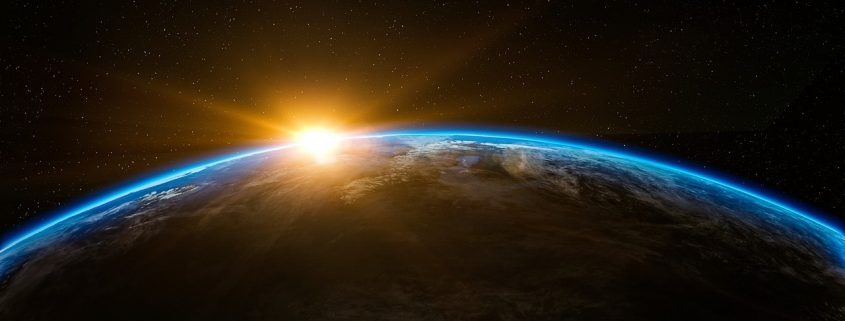Showing My Cards: Old Earth Creation or Young Earth Creation?
Winning in the game of Poker is as much about acting as it is skill. A bad hand and a good bluff can lead to victory at the table. Skilled players are always on the lookout for the “tell.” This is a change in another player’s behavior or demeanor that gives away their hand. If you’re tracking with this series in Genesis, you may have picked up on my “tell”, even though I’ve tried to play my cards close to the chest. How old is it? Old earth creation or young earth creation?
When it comes to the age of the earth and the Bible, I am agnostic. I don’t believe that the Bible gives us enough information to make a definitive case. More than that, I’m not convinced that Scripture cares to answer the question. It has a different story to tell. My “agnosticism” is not based on doctrinal apathy, but on a careful reading of the verses and passages often used to support the Young Earth Creation or Old Earth Creation positions (hereafter YEC and OEC). This is why we spent so much time looking at Genesis 1:1 and the genealogies of the Bible.
When the Book of Scripture is silent on an issue like this, it frees me up to explore what the Book of Nature has to say on the subject. I hold to the position that science is the hand-maiden of Scripture (i.e. it lives to serve God’s Word). So, what does science say about the age of the earth? Once again, good Christians agree to disagree.
The YEC position is that the earth is a little over 6,000 years old. Apart from their Biblical arguments, which I’ ve weighed in the balance and found wanting, many Young Earther’s have scientific reasons for their view.
Scientific Evidence for YEC:
Answers in Genesis sits on the Young Earth side of the pew. I will summarize a few of their arguments and post a link for further reading.
- Very little sediment on the sea floor. If sediments really have been accumulating for billions of years, the sea bed should be choked with miles of sediment (https://answersingenesis.org/geology/sedimentation/1-very-little-sediment-on-the-seafloor/). The actual amount of sediment argues for a young earth.
- Soft tissue in fossils. If dinosaurs really did live millions and millions of years ago, why do some fossils still contain well-preserved soft tissue remains? https://answersingenesis.org/fossils/3-soft-tissue-in-fossils/.
- Very little salt in the sea. At the current rate of salinization and given an earth millions of years old, we would expect the ocean to be 70X more salty than we actually see. https://answersingenesis.org/evidence-for-creation/9-very-little-salt-in-the-sea/.
People opposed to YEC will often call it “pseudo-science”, but that sounds like junior high name calling to me. Many Young Earther’s are well read and doing their best to make sense of observational science. A good friend of mine is a godly woman with a degree in biology and she’s a YEC. When it comes to science, she could take me out to the deep end and drown me. Recently she’s put a rock in my shoe about the reliability of dating methods. According to her research, anything past 230,000 years of age is scientifically problematic. Radio Carbon 14 dating is accurate only from 6,000 to 50,000 years (a disputed upward range) and thermoluminescence dating (measuring the amount of light emitted from electrons trapped in crystals and minerals) is only accurate dating objects up to 10,000 years (with an upper and less accurate range of 230,000 years). She reminds me that both dating methods fall short of measuring millions and billions of years. Good point!
Scientific Evidence for OEC:
Reasons to Believe is an advocate for a Old Earth Creationism. They agree with mainstream science about the approximate age of the earth (4.5 billion years old), but as creationists who believe that man is a direct and immediate creation, they postulate that Adam and Eve were created sometime between 50 and 150,000 years ago (http://www.reasons.org/rtb-101/scientificevidenceforanoldearth). In other words, the earth is old, but humanity is young. They too are well read and have scientific reasons for their position:
- The existence of stars and planets would be impossible unless the universe has been expanding for billions of years. If the universe has only been expanding for thousands of years, all you would get is hydrogen gas; if trillions, then all you would get are black holes.
- The normative rate of erosion of the continents demands long periods of time. Erosion takes place over long periods of time. For example, using the normal rate of erosion, it would have taken anywhere from 6 million to 17 million years for the Grand Canyon to have formed.
- The measurement of sedimentary varves argues for rock formations that are millions of years old. Varves are laminated layers of sedimentary rock, often produced in glacial lakes. During the summer months, light layers of sedimentation are laid down, but in the winter months, fine dark silt is laid down producing darker layers. Together both light and dark layers show one year of sedimentation. This process, like measuring the rings of a tree, allows us to estimate the amount of years in a layer of rock. For instance, The Green River Formation is eastern Utah boasts an estimated total of 20 million varves, suggesting a time period of 20 million years.
Note that they too are doing their best to make sense of observational science. So, how old is it really? I say, let each person be fully convinced in their own mind and embrace one another in holy love. God has not given us truth, either from the book of Scripture or the book of nature, to make it ugly. At this point, I lean toward an old earth with a young humanity. That said, I do not subscribe to the day-age theory. Instead, I read the six days of creation as 24 hour days of one earth week. Stay tuned and I’ll show you how I get there.
Next Week: Are the days of Genesis chapter one 24 hour days of one earth week?


